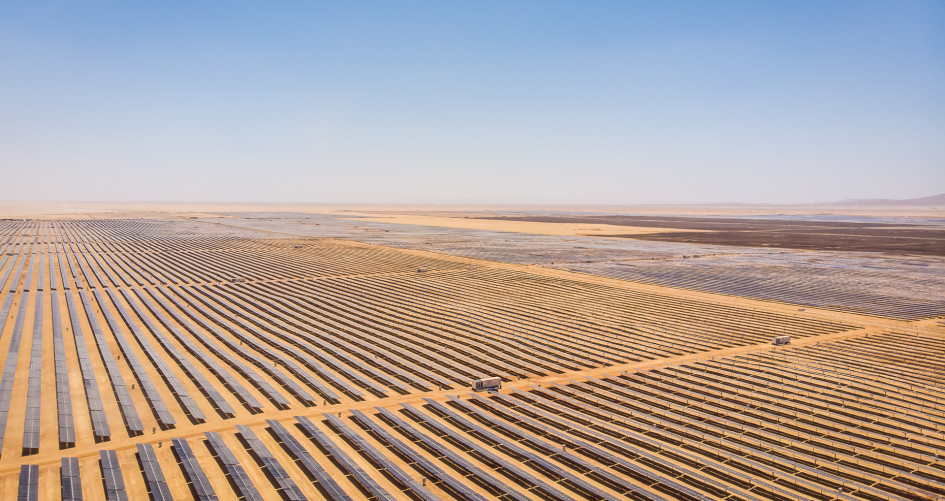The Benban Solar Park is the largest solar project in Africa and a template for what can be achieved in renewable energy.
Egypt is the third most populous country in Africa, with its capital Cairo, the largest city in Africa and the Arab World. It is a country that needs a lot of power to function, which is why its issues around power supplies are so problematic. Many parts of Egypt suffer frequent power cuts, something particularly troubling in the summer months, when temperatures can top 40 degrees Celsius.
It’s not the only issue Egypt faces, with a myriad of other climate change problems related to everything from water scarcity to air quality. Yet the country also has some striking natural advantages, particularly when it comes to solar energy: abundant year-round sunshine, and lots of unused land. And with Egypt up until recently spending more on electricity subsidies than it did on education, social welfare and healthcare combined, it’s clear that new solutions were needed to power a country of more than 100 million people.
Enter the Benban Solar Park, a huge complex of more than 41 solar power plants, spread over 37km – one of the largest solar photovoltaic parks in the world and the largest solar project in Africa. The park is in the country’s arid southeast, about 50km north of Aswan. The site was divided into 41 plots by the Egyptian government, which were then assigned to 30 developers through financial incentives called ‘feed in tariffs’, where the government promises the developers a fixed price for the power generated for 25 years. Benban was connected to Egypt’s National Grid in 2019, and currently produces 930GWh a year, enough to power 420,000 households, which is the equivalent of 423,000 tons of CO2 emissions avoided.
Morten Langsholdt, a Senior Vice President of Scatec, a Norwegian clean energy company which led the development and implementation of over 400MW of the plant, says: “A solar project of this size hadn’t been done in Africa before, but the beauty of solar is that the resource is already there, you just have to capture it. The Egyptian authorities deserve a lot of praise, as do all the stakeholders.”
Loans for the infrastructure on the site were provided by the International Finance Corporation and the World Bank, illustrating the importance of multilateral cooperation when it comes to projects such as these. Finished in 2019, it is an example of public-private cooperation and the potential of renewable energy in Africa when regulators, banks, investors and developers are all on the same page.
Globally, solar power accounted for around 3 per cent of electricity generation in 2019, according to the IEA. Yet that figure is rising, particularly as the costs around solar have fallen dramatically in recent years, with the price of solar cells falling nearly 90 per cent between 2009 and 2019. Yet despite reduced costs, and a growing appetite for solar energy, there are still multiple regulatory and financial hurdles to overcome across Africa, which makes the Benban park a vital template for future solar projects on the continent.
Benban is also a pioneering project in a technical sense, in that it was the first to use bifacial solar modules, which produce energy from both sides of the solar panel (both the energy from direct sunlight and sunlight reflected off the ground), increasing the amount of energy produced.
“The Egyptians knew that they needed to work to ensure all the permits and licensing were taken care of, and so a ‘one-stop shop approach was needed,” Langsholdt says. “The structure they put together gave the project a lot of credibility, so ourselves and the other partners could see that if invest the time and money its very probable that we can make it work,” he adds.
Egypt’s government has set a goal for 20 per cent of the nation’s electricity to come from renewable sources by 2022, and 42 per cent by 2035. The country’s potential may be even greater: A 2018 report by the International Renewable Energy Agency concluded that Egypt could “realistically draw 53 per cent of its electricity from renewables by 2030.” In 2016, about 9 percent of Egypt’s electricity came from renewable sources, and mostly from dams along the Nile River.
“There’s no lack of capital, and no lack of interest in investing in renewable energy projects, but they need to be structured in a way that gives the appropriate risk for capital to be deployed,” Morten says. “That is slow work and entails putting in place guarantee structures for the public utility who is the ultimate purchaser of the power that these plants will generate. And it is because of these types of demands we are not seeing enough solar projects in Africa, compared to the resources that are there, and the appetite in the market.”
“The price per KWH we generate is fixed for 20 years, which gives visibility up front,” Langsholdt says. “When you start time and resources into realizing these projects, you know that at the end of the day what the income will be and that gives you sufficient comfort to invest in these types of projects.”
According to Dr. Mohamed Orabi, a Professor of power electronics at Aswan University, the Benban project has had a number of positive effects, including driving down the cost of PV systems in Egypt, proved that solar could be a viable source of energy, and granted experience installing solar systems to the more than 3,000 Egyptians who worked at the site.
As Langsholdt says: “This experience with Benban shows that these types of projects can be done and gives a precedent. All the companies and partners and authorities showed what can be done, and this reduces the risk for new projects, as we have a proof of concept.”
